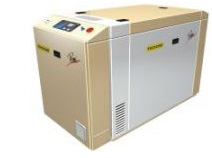What is Cogeneration
 The cogeneration concept means a combined power and heat generation. Compared to traditional power plants, in case of which the heat generated during the power production is released to the environment, the cogeneration unit uses this heat for heating, and thus it saves fuel, and the funds needed for its purchase.
The cogeneration concept means a combined power and heat generation. Compared to traditional power plants, in case of which the heat generated during the power production is released to the environment, the cogeneration unit uses this heat for heating, and thus it saves fuel, and the funds needed for its purchase.
How Does Cogeneration Work
In all plants electricity is generated through rotation of the turbine powered generator. The heat required to produce steam that drives a turbine is usually obtained by burning coal, or through nuclear fission of uranium atom nucleus. A large part of the heat is not used, and it is discharged into the atmosphere without being further used. The efficiency of the thermal power plants is about 30%. The state of the art combined cycle power plants have efficiency of about 50%, but additional losses of about 11% occur in transformation and remote transmission of electricity. The cogeneration unit generates electricity in the same way as does other power plant generation equipment – through spinning the power generator, using an internal combustion piston engine. Engines in cogeneration units are normally designed to run on natural gas, but they can also burn other liquid or gaseous fuels.
The heat that is released in the combustion engine, is further collected via cooling the engine, oil and flue-gases, and as a result, the cogeneration unit efficiency falls within the range of 80-90%.
Main navigation left
Division page menu

of International
Gas Union
(IGU)


Sme
certifikovanou
firmou
OHSAS 18001:2007
ISO 14001:2004
ISO 9001:2008


